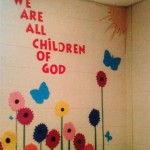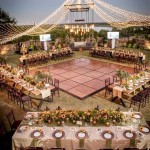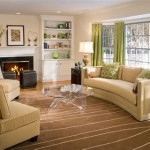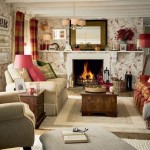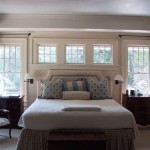Children's Room Decoration Ideas
Decorating a child's room presents a unique opportunity to create a space that fosters creativity, encourages learning, and provides a comfortable sanctuary. Careful planning and consideration of the child's age, interests, and personality are essential to achieving a successful and enjoyable space.
Theme-Based Designs: A popular approach to children's room decoration involves selecting a central theme. This provides a cohesive framework for design choices and can be easily adapted as the child grows. Popular themes include adventures, nature, space, under the sea, and favorite characters from books or movies. The chosen theme can influence wall colors, furniture, bedding, and decorative accessories.
Wall Treatments: Walls offer a large canvas for creative expression. Paint offers a cost-effective and versatile solution, allowing for a wide range of colors and finishes. Wallpaper can introduce patterns, textures, and character-specific designs. Murals offer a more personalized touch, potentially depicting scenes from favorite stories or depicting calming natural landscapes. Chalkboard paint provides an interactive element, allowing children to draw and express themselves directly on the walls.
Furniture Selection: Functionality and safety are paramount when selecting furniture for a child's room. A sturdy bed, appropriate for the child's age and size, is the centerpiece of the room. Storage solutions, such as shelves, drawers, and toy chests, help maintain organization and minimize clutter. A desk or table provides a dedicated space for homework, crafts, and other activities. Choosing child-sized furniture can enhance the child's sense of ownership and independence.
Textiles and Soft Furnishings: Rugs, curtains, and bedding play a crucial role in defining the room's ambiance. Soft textures and playful patterns can add warmth and personality. Consider hypoallergenic materials for children with sensitivities. Rugs can define different areas within the room, such as a play area or reading nook. Curtains offer privacy and control over light levels. Bedding should be comfortable and inviting, promoting restful sleep.
Lighting Considerations: Proper lighting is essential for functionality and safety. A combination of ambient, task, and accent lighting is recommended. A ceiling fixture provides overall illumination, while a desk lamp or bedside lamp offers focused light for reading and other activities. Nightlights can alleviate fears of the dark and provide a sense of security. Dimmable lights offer flexibility and control over the room's atmosphere.
Storage and Organization: Maintaining a clutter-free environment is crucial in a child's room. Utilizing a variety of storage solutions can help achieve this goal. Shelves and bookcases provide space for books, toys, and decorative items. Drawers and cabinets offer concealed storage for clothing and other belongings. Toy chests and bins provide a convenient place to store toys and games. Open shelving can display cherished items and personalize the space.
Personalized Touches: Incorporating personalized elements can make the room feel truly special and unique. Displaying the child's artwork, photographs, and other creations adds a personal touch. Incorporating hobbies and interests into the decor, such as displaying sports equipment or musical instruments, can further personalize the space. Monograms, initials, and personalized wall decals can also add a sense of ownership.
Age-Appropriate Design: The child's age should significantly influence design choices. A nursery for an infant will have different requirements than a room for a teenager. Infants benefit from calming colors and soft textures. Toddlers require ample space for play and exploration. School-aged children need designated areas for study and homework. Teenagers appreciate having input into the design and prefer spaces that reflect their evolving personalities.
Safety First: Childproofing the room is of utmost importance. Secure furniture to the walls to prevent tipping hazards. Cover electrical outlets and secure any loose cords. Choose window coverings without cords that pose a strangulation risk. Ensure that all materials used are non-toxic and safe for children. Regularly inspect the room for potential hazards.
Budget-Friendly Decorating: Creating a beautiful and functional children's room doesn't require a large budget. Repurposing existing furniture, utilizing DIY projects, and shopping for secondhand items can significantly reduce costs. Focusing on a few key elements, such as a fresh coat of paint and new bedding, can make a big impact without breaking the bank. Creativity and resourcefulness can go a long way in achieving a stylish and affordable space.
Flexibility and Adaptability: Children grow and change quickly, and their room should be able to adapt to their evolving needs and interests. Choosing furniture that can serve multiple purposes, such as a convertible crib or a loft bed, can extend the lifespan of the design. Neutral wall colors provide a versatile backdrop that can be easily updated with accessories. Investing in quality pieces that can withstand wear and tear can also contribute to the longevity of the design.

Kids Room Decorating Ideas That Go From Toddler To Teen

7 Kids Room Decorating Tips To Create A Fun Space

10 Decorating Ideas For Kids Rooms How To Decorate A Room


26 Best Kid Room Decor Ideas And Designs For 2025
:max_bytes(150000):strip_icc()/SimpleNordicNursery-ea8177d4262342b5a56c6bd416248be8.jpg?strip=all)
8 Tips For Designing Better Kids Rooms

66 Cool Kids Room Ideas Paint Furniture Storage And More

10 Awesome Diy Ideas For Your Kid S Room

38 Cool Kids Room Ideas How To Decorate A Child S Bedroom

50 Kids Room Design Ideas Amazing Bedroom By Livspace
Related Posts

